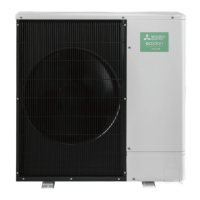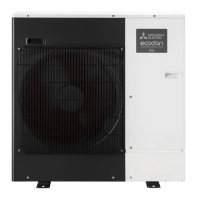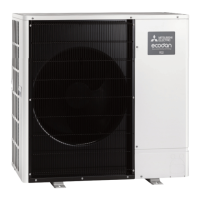
Do you have a question about the Mitsubishi Electric PUZ-WZ50VAA and is the answer not in the manual?
| Cooling Capacity (kW) | 5.0 |
|---|---|
| Heating Capacity (kW) | 6.0 |
| Refrigerant | R32 |
| Power Supply | 220-240 V, 50 Hz |
| Indoor Unit Noise Level | 25 dB(A) |
| Coefficient of Performance (Heating) | 4.0 |
| Operating Temperature Range (Cooling) | -10°C to 46°C |
| Noise Level (Indoor Unit) | 25 dB(A) |
Explains symbols and general warnings related to unit operation and safety.
Highlights risks associated with R290 refrigerant, emphasizing fire and explosion hazards.
Emphasizes professional qualifications for installation, servicing, and repair by competent electricians.
Covers proper electrical installation, wiring, grounding, and circuit breaker usage.
Defines protective zones and outlines immediate actions in case of refrigerant leakage.
Covers safe brazing practices and essential precautions to prevent fire hazards.
Provides safety guidelines before installing or relocating the unit, including environmental and handling precautions.
Details essential safety measures before commencing electrical work, including breakers and grounding.
Outlines critical steps before test runs and emphasizes specific safety measures for R290 refrigerant handling.
Details essential safety checks and procedures before working with flammable refrigerants.
Covers safety measures for replacing and repairing electrical components, including initial checks.
Details safety considerations for electrical work, component replacement, and cable condition checks.
Covers safe practices for using leak detectors and procedures for brazing in the presence of refrigerant.
Outlines procedures for safely breaking into refrigerant circuits, charging, and handling refrigerant.
Details the essential steps and precautions for safe recovery of refrigerants from the system.
Provides instructions for safely decommissioning and disposing of the unit and its components.
Guides selection of suitable outdoor unit placement, considering safety, environment, and accessibility.
Provides guidance on installing units in windy areas to ensure proper ventilation and prevent malfunctions.
Specifies minimum installation clearances and dimensions for single and multiple outdoor unit configurations.
Addresses safety and operational considerations for installing units in enclosed spaces with specific options.
Defines the protective zone around the unit and lists forbidden openings and ignition sources within it.
Specifies the required dimensions of the protective zone based on different installation scenarios and surrounding structures.
Details protective zone dimensions for installations with front openings and side wall proximity.
Details crucial safety warnings and procedures for securely installing the outdoor unit to prevent damage or injury.
Specifies the correct method for connecting condensate drains, prohibiting direct connections to waste systems.
Details procedures for connecting water pipes, recommended water quality, and safety warnings for hot water.
Presents charts illustrating available ranges for water flow rate and return water temperature for heating and cooling.
Provides instructions for wiring the outdoor unit and emphasizes safety checks before powering up.
Details field electrical wiring requirements, cable specifications, and critical safety warnings for high voltage terminals.
Outlines essential checks before the test run, including insulation resistance measurements and power supply timing.
Explains how to set the refrigerant address using the DIP switch on the outdoor unit.
Lists key information to explain to the end-user and stresses the importance of keeping manuals.
Warns against over-refrigerating the unit, which can lead to failure or fire hazards.
Outlines proper methods for disposing of the unit and emphasizes safe refrigerant handling during disposal.
Details critical safety requirements to follow when transporting the unit for disposal.
Lists technical specifications for outdoor models and provides information on locating the serial number.












